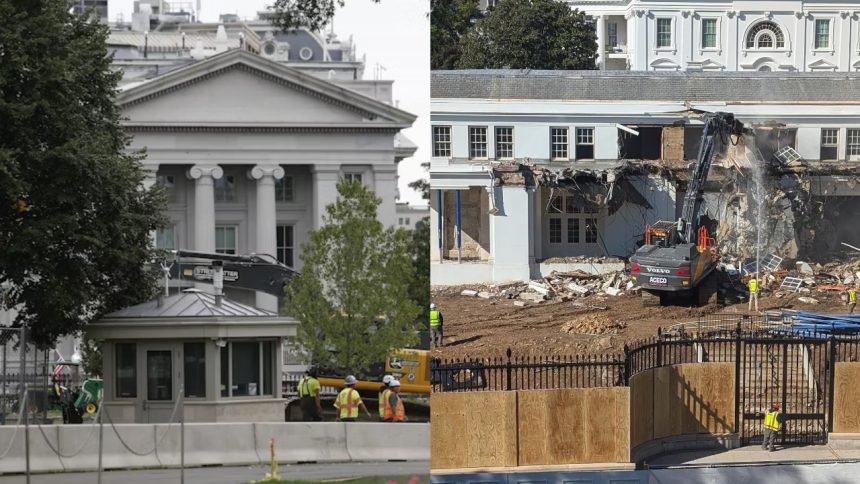The iconic white columns and neoclassical facade of the White House’s East Wing, a familiar sight to tourists and a daily workplace for the First Lady’s staff, are now at the center of a whirlwind of construction activity. This flurry of demolition and rebuilding, initiated by President Donald Trump to create a grand new ballroom, has catapulted a seemingly simple historical question—when was the East Wing built?—into the modern spotlight, revealing a story that spans more than a century of presidential needs, from hidden bunkers to glittering state dinners.
While the East Wing’s history dates back to 1902, the structure has been renovated and changed many times over the decades. The current project continues this pattern of evolution, though its scale and speed have made it a focal point of public discussion.
You Might Like: Where is MLB Star George Springer From?
The Evolution of the East Wing
The story of the East Wing begins with President Theodore Roosevelt. In 1902, as part of a major renovation of the White House, a small East Wing was constructed to serve as a formal public entrance. Its main feature was a long cloakroom for guests to leave their coats and hats during large social events. This original structure was fairly modest, fulfilling a simple, practical need for a growing presidential social calendar.
The East Wing took the form we largely recognize today in 1942 under President Franklin D. Roosevelt. This expansion, which added a second story, was undertaken primarily for a secret and critical purpose: to conceal the construction of an underground bunker known as the Presidential Emergency Operations Center (PEOC). Around this time, the former cloakroom from Theodore Roosevelt’s era was converted into the White House Family Theater. The wing also became office space for correspondence, calligraphers, and the social secretary, a role first employed by First Lady Eleanor Roosevelt.
Teddy Roosevelt built the West Wing.
Taft made the Executive Office oval.
FDR added the entire East Wing and included an indoor pool for himself.
Truman gutted the entire White House.
Nixon added a bowling alley.
Obama added a basketball court.
Trump is building a ballroom. pic.twitter.com/OoQQjZVwQ1
— Geiger Capital (@Geiger_Capital) October 20, 2025
This transformation turned the East Wing from a simple entryway into a functional workspace. In 1977, First Lady Rosalynn Carter cemented this role by becoming the first to establish her own office within the East Wing.
Also See: The Tip That Stopped a Tragedy: Atlanta Airport Scare
The East Wing Today and Its New Future
Today, the East Wing is a hub of daily White House operations. It houses the offices of the First Lady and her staff, including the Social Secretary and the Graphics and Calligraphy Office, which produces all the invitations for White House events. For the thousands of tourists who visit each year, it also serves as the traditional visitors’ entrance.
The wing is now undergoing its most significant change in over 80 years. In July 2025, the White House announced plans to construct a 90,000-square-foot State Ballroom, a project championed by President Trump. He has frequently stated that the current largest room, the East Room, is too small for large state dinners, which often require temporary tents on the South Lawn. The new ballroom, with a planned capacity of nearly 1,000 people, is intended to solve this problem.
JUST IN: The White House has begun DEMOLISHING portions of the East Wing of the White House to build Trump’s $250 million ballroom — despite earlier claiming it wouldn’t “interfere” with the existing White House structure. (Washington Post) pic.twitter.com/qVUzEajM8j
— MeidasTouch (@MeidasTouch) October 20, 2025
To make space for this addition, demolition on part of the East Wing’s facade began in October 2025. The White House has stated that the project involves modernizing the East Wing and that offices will be temporarily relocated. The $250 million project is being funded privately by President Trump and other donors, with Clark Construction leading the build and McCrery Architects providing the design. The ballroom is expected to be completed before the end of the president’s term in January 2029.



